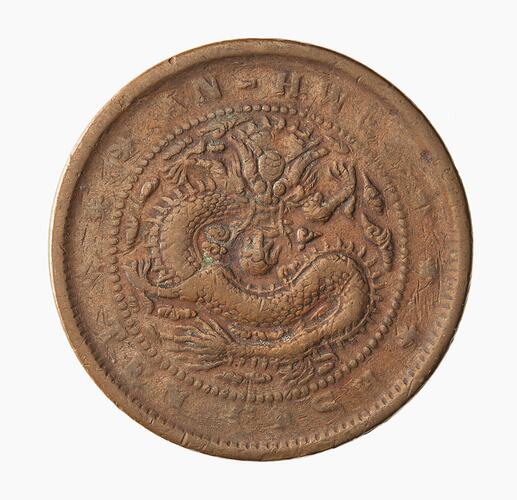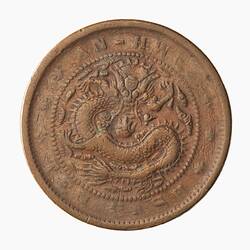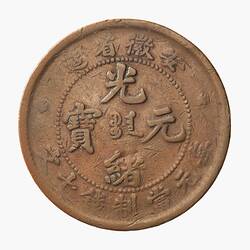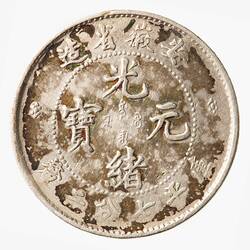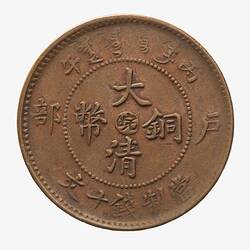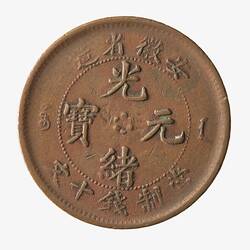Summary
10 Cash, Issued by Anhwei Province (Anhui), China, nd. (1902-1906)
Struck at the Anking mint
Obverse Description
At centre within circle of beads two Manchu and four Chinese characters; around, outside circle of beads, 11 characters
Reverse Description
At centre within a circle of beads, a dragon facing; above AN-HWEI; around below, TEN CASH
Edge Description
Plain
Significance
The Provincial mint at Anking (Anqing) was opened, with modern machinery, in 1897 but was closed between 1899 and 1902. In the first period it struck only silver coins. The second period was dedicated to the production of bronze coins (including this piece), which it continued until finally closed in 1909. Anking was founded in the 2nd century BC. It played an important role in the Taiping Rebellion (particularly 1853-1861) and is now a prefecture-level city in the Anhui Province.
The Annual Report of the Royal Mint, London for 1906 records of the Chinese 10-cash coin that, from all Chinese mints, over 10,000 million were in circulation. Earlier strikings were of low copper content though by 1905 a 95% standard was being achieved. The coins were only worth 3 or 4 cash but were forced into circulation at the 10 cash level. The number produced and the fact that they were not recieved in payment of taxes or government revenue saw them heavily discounted in circulation. On 22 August 1905 the Emperor approved a regulation that would establish a central mint at Tientsin (now Tianjin) with four branch mints at Nanking (now Nanjing), Tientsin, Wuchang and Canton (now Guangzhou). Expansion of all other mints was forbidden with an intention to close them when possible, Anking was closed in 1909. The official banks were to watch money-changers and markets, with any attempt to raise or lower the value of the coins to be reported to the Board of Revenue or Provincial authorities. Reference: Royal Mint Annual Report 1906, pp.26-28
More Information
-
Collection Names
-
Collecting Areas
-
Acquisition Information
Donation from (Estate of) Mr Erich Wodak, John Gartner, 24 Jan 1983
-
Date Issued
1902-1906 AD
-
Issued By
-
Mint
-
Denomination
-
Series
-
Material
Bronze
-
Axis
12
-
Classification
-
Category
-
Discipline
-
Type of item
-
Dimensions
28 mm (Outside Diameter), 7.29 g (Weight)
worn
-
Shape
Round
-
References
Y#39
[Book] Bruce, Colin R. 2009. 2009 Standard Catalogue of World Coins 1901 - 2000., 394 Pages
